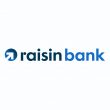What my aunt can teach you about decision-making
I got a message from one of my aunts last night.
Literally to the rescue as I had not yet penned my piece for this week and I was seeking inspiration. And boy did I get it. Inspiration and a massive surge of joy… not to mention the heady feeling confirmation gives you.
Yes confirmation.
That feeling of “yes… I am right”.
Because whenever I speak about transformation, digital capabilities and the complexity of navigating business in a changed economy, I always harp on about how the tech is the easy bit.
Not easy per se, just easy by comparison.
I always go on and on about how the decisions that need to be made are around business drivers and aspirations. How the hard bit is those decisions themselves, how you go about making them, how long you take, how distracted you get, how much you second-guess yourself and the time you waste in the process.
So. Back to last night.
My aunt had a question. She wanted to know what an NFT was.
My aunt is smart and savvy and engaged but also of an analogue generation and retired, so by anyone’s definition, she doesn’t have to learn new things, unless she wants to.
And she wants to.
And in so many ways you can stop reading now and you will have the gist of the piece. But please do read on.
My aunt is an artist and a crafts-woman and a deeply creative soul.
She had listed some of her paintings to sell (to make room in her home, so she can continue painting) and someone expressed an interest in her work.
Only this someone didn’t want to buy the canvas. He wanted an NFT of one of her paintings.
She could have ignored the ask. She could have said no. She could have googled.
Which is what she did.
Only she realised there was way too much information to navigate without a compass.
So. On she went to find a compass.
Step 1: asking the right questions of the right people.
She asked someone she trusts and who she knows is “in this space”. She asked basic questions: and by that I don’t mean simple, I mean fundamental. She asked questions that would inform her and allow her to ask more questions.
I explained.
What a non-fungible token (NFT) was, how it works, how you could parametrise it because it’s programmable, so ownership can come with rules and she could sell a “numbered print” of her work and retain the original. And all that stuff.
We had a brief conversation, she asked some questions including the existential ones: why would you want to buy art in that form?
I then crashed out, I confess. Jetlag is real is all I’m going to say.
When I woke up, I checked in.
She had done some reading and then had done some thinking.
She didn’t take my word for it. This is important.
Step 2: deep diving into a variety of sources across the pertinent questions.
Using the input she took from a trusted source (yours truly) as a compass, she went out into the wilderness and did her own research.
She researched the company this potential buyer had recommended.
Read blogs and articles and contributions to discussion fora on everything from why this is a great idea to why it’s a terrible idea; why it is the future and why it is only a stepping stone to the future; and, more interestingly, what an NFT marketplace looks like, what could go wrong in a transaction, especially for a rookie, what to be mindful of if you decide to go down this path and whether it was worth the effort if she was only going to do it once.
She did her research.
She didn’t spend a long time, but she spent some time so that when she formed an opinion, it would be informed.
Crazy talk, right?
Not only did she seek to be informed though. From a business perspective, she did something even more radical.
She informed herself in a pointed way, in an intentional way, in a way that enabled her to pit the scale of the ambition against the cost of the operation in money and time in order to work out if “it was worth the faff”.
Fancy that.
By the time I spoke to her the next morning, she was fascinated by this whole world she had only a day previously known nothing about and she had also made a decision.
Informed and timely decision-making is possible, it turns out.
Step 3: decision-making needs to be relative to your own realities and priorities.
Making some extra money is always appealing but the point of the exercise of her selling her painting was not to make money, it was to make space while not throwing out the artwork, so going through the whole NFT rigmarole would be higher cost, higher risk (as the person could be a time-waster or a scammer) and it would not meet her actual objectives.
So, although she did the research and was tempted, she reminded herself of what she was trying to achieve which was make room.
There. Done. Informed and timely decision made.
These are the three things, the only three things, you need as a decision-maker in life and business. So if you are a bank executive, hello and welcome and please learn from my aunt:
If you come across something new and unfamiliar, ask questions. Educate yourself.
Don’t take a single opinion as gospel. Treat it as a starting point. Read. Commission research. Get your teams to do it. You have people.
But time-box the exercise. Don’t spend forever on it. Don’t hide behind it to avoid making the decision.
Then make a decision that is aligned to what you are trying to achieve in the first place, back when you came across this shiny new thing and got distracted.
Make a decision, not on the basis of what is possible. Not on the basis of what everyone else is doing. But what you and your business were trying to achieve in the first place. The problem you were trying to solve when this new thing came up as an option.
That was the exam question, remember?
If the new things you learned give you a better way of achieving your aim, great.
If the new things you learned make you re-think your aim and give you new ambition, also great.
But if the new things distract, shiny as they may be, look away from the light and carry on with your work.
#LedaWrites

Leda Glyptis is FinTech Futures’ resident thought provocateur – she leads, writes on, lives and breathes transformation and digital disruption.
She is a recovering banker, lapsed academic and long-term resident of the banking ecosystem. She is chief client officer at 10x Future Technologies.
All opinions are her own. You can’t have them – but you are welcome to debate and comment!
Follow Leda on Twitter @LedaGlyptis and LinkedIn.












































